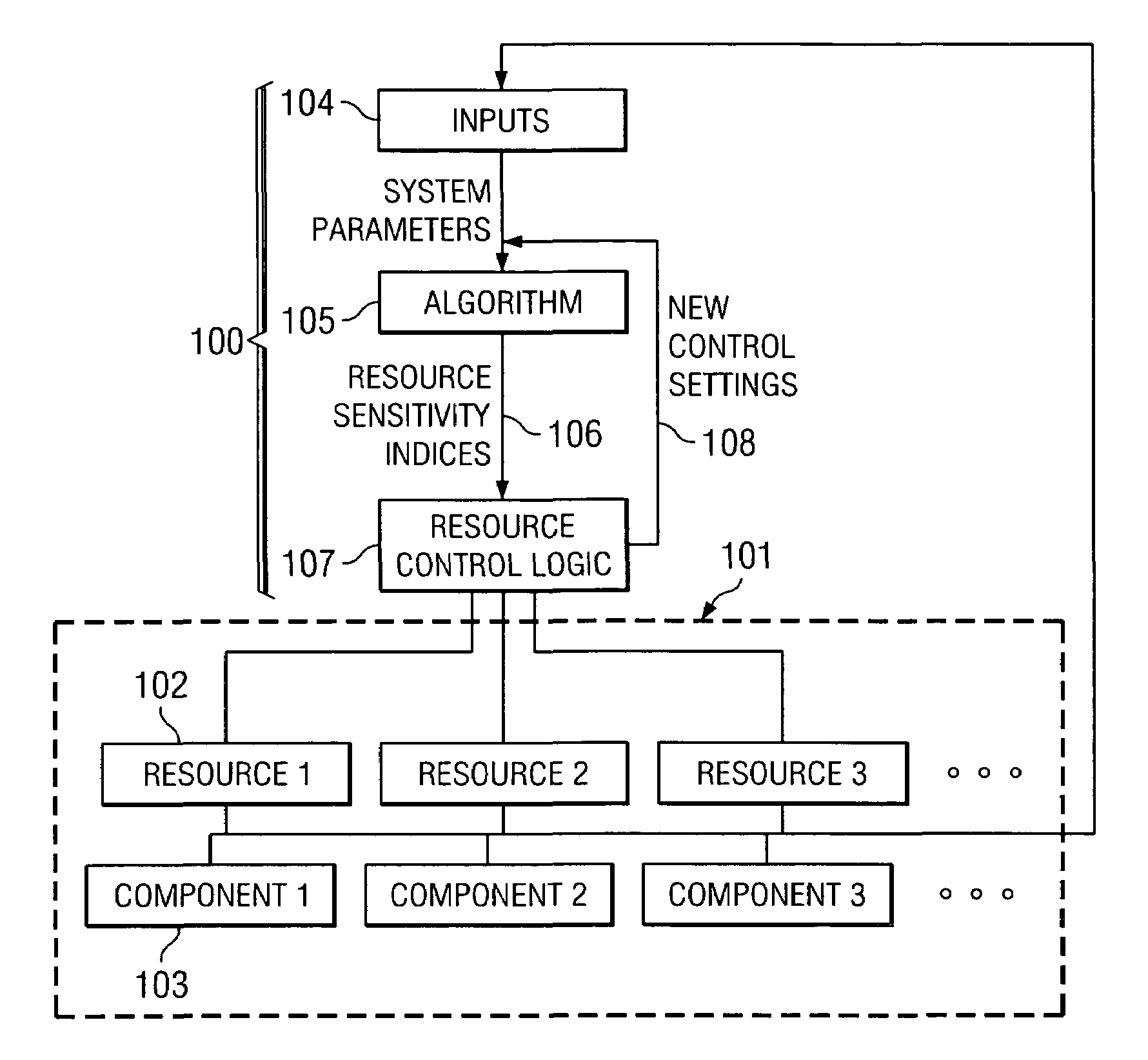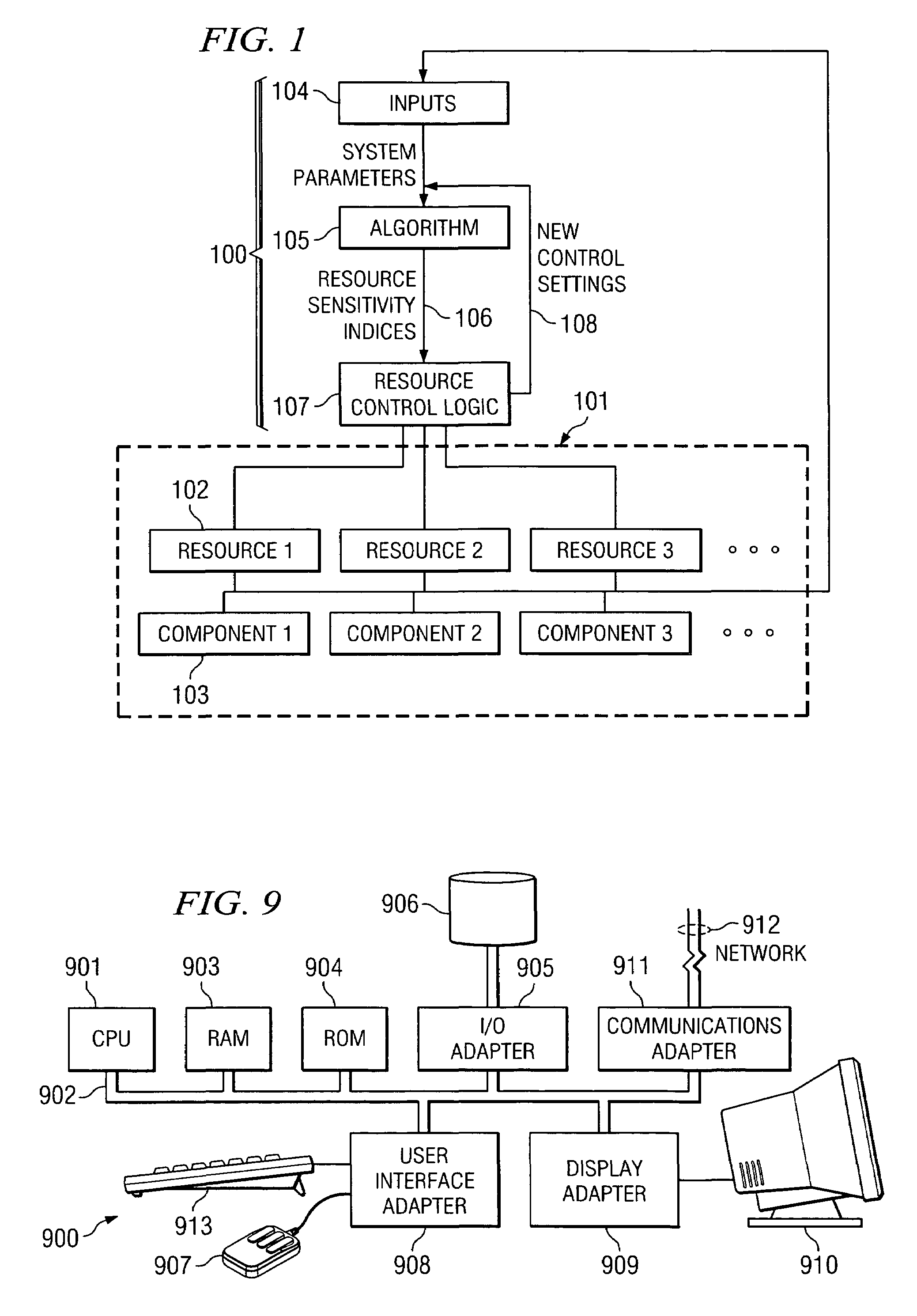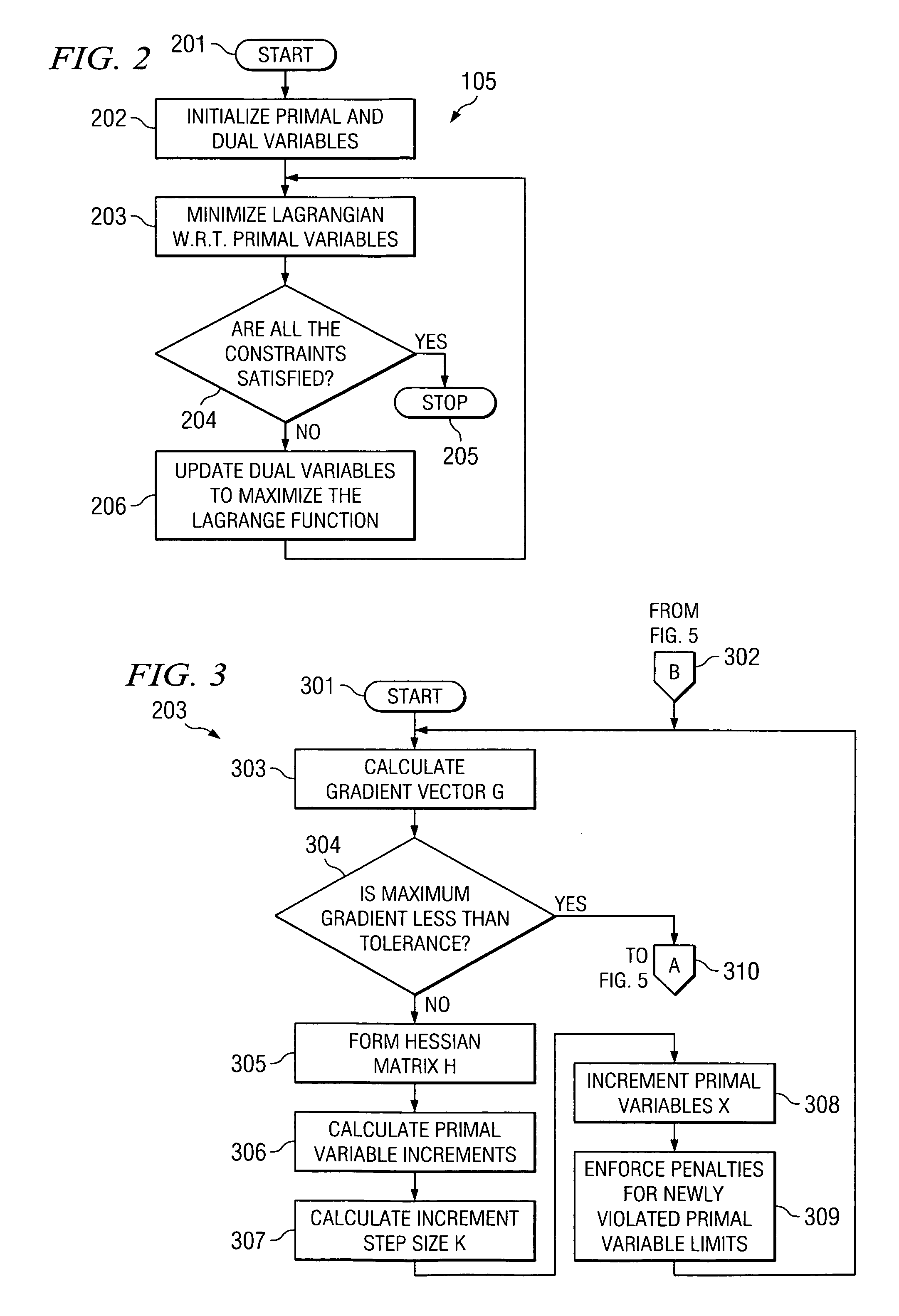Resource management using calculated sensitivities
a resource management and sensitivity technology, applied in adaptive control, process and machine control, instruments, etc., can solve the problems of large-scale analysis and optimization of non-linear networks, the problem of nonlinear networks that are typically applied to network problems that are first simplified and/or reduced in scale, and the problem of most (if not all) objectives are nonlinear problems, etc., to achieve the effect of reducing the objective, increasing the objective, and eliminating all problem-limiting assumptions
- Summary
- Abstract
- Description
- Claims
- Application Information
AI Technical Summary
Benefits of technology
Problems solved by technology
Method used
Image
Examples
Embodiment Construction
[0062]Among the most complicated problems in optimization is the problem of optimizing network flows in a large non-linear network. Existing methods for solving such problems simplify either the network and / or the problem in order to produce a solution. Such simplifications change the network and the problem, and by so doing, produce solutions that are not accurately responsive to actual network conditions. Even with the network and problem simplifications, such solutions require large amounts of computation time, and cannot be used in real-time to meet network operations challenges. Embodiments of the invention discussed here overcome these problems. Embodiments of the invention are capable of providing solutions to large size network flows (e.g. 10-50,000 nodes) in near real-time speeds (5-10 seconds on a desktop computer).
[0063]FIG. 1 depicts a schematic representation of an embodiment 100 of the invention used to analyze and / or optimize a system under test (SUT) 101. The SUT 101...
PUM
 Login to View More
Login to View More Abstract
Description
Claims
Application Information
 Login to View More
Login to View More - R&D
- Intellectual Property
- Life Sciences
- Materials
- Tech Scout
- Unparalleled Data Quality
- Higher Quality Content
- 60% Fewer Hallucinations
Browse by: Latest US Patents, China's latest patents, Technical Efficacy Thesaurus, Application Domain, Technology Topic, Popular Technical Reports.
© 2025 PatSnap. All rights reserved.Legal|Privacy policy|Modern Slavery Act Transparency Statement|Sitemap|About US| Contact US: help@patsnap.com



